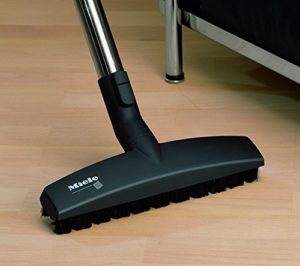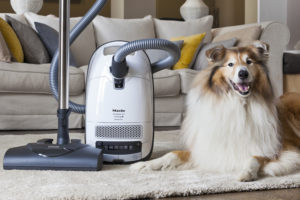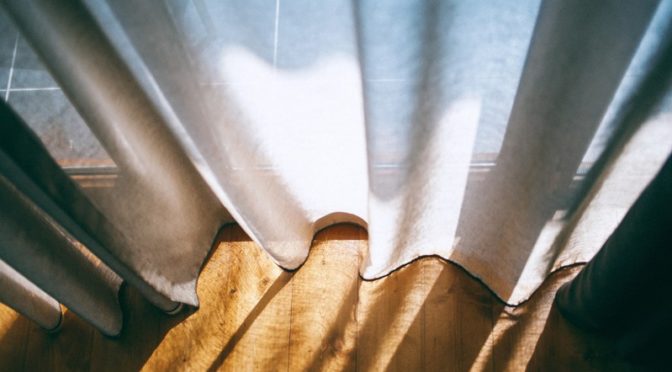
No matter whether you choose bare or carpeted flooring for your home, you’re going to need something to go under your feet. Ideally, you’ll start with a home that already has a healthy and environmentally responsible floor installed, whether new or old. However, most of us don’t have such an option before us, whether due to general availability or financial constraints. Here’s what to look for when replacing an old floor (or searching for a home with pre-installed flooring) with a priority toward floors that are ecologically friendly and good for you, your children, and your pets.
Consider solid wood flooring (from a sustainable source, of course)

Commonly known as hardwood flooring, solid wood flooring is made purely from wood. You can buy it pre-finished or unfinished, depending on your preferences. What’s important is that whatever wood you buy comes from sustainable sources, which means harvesting from foresters that replant at least as many trees as they cut down. Between domestic and exotic woods, it’s almost always better to choose domestic woods, simply because it takes less resources to bring them to your home than it does with woods shipped from faraway continents and across oceans. From a health perspective, just about any wood will work well, but remember that wood is susceptible to moisture damage, and if you use it in an environment where it frequently sees water, you might see rot, mold, and mildew issues over time.

Similarly, if you finish your wood, especially if it’s per-finished at a factory with industrial-grade urethane, you’re going to add a chemical layer to it that’s going to release some amount of volatile organic compounds, or VOCs, with time. Stay away from engineered wood; it’s chock full of resins due to being a veritable potpourri of particles glued together. The top sliver is real wood, yes, but the vast majority of what you’re buying when you buy engineered wood isn’t what you see when you bring it home.
Think of bamboo (but beware the resins used in manufacture)

Bamboo is another excellent choice for flooring from an environmental perspective, and it even beats wood because you’re dealing with a grass and not a tree. Bamboo is the fastest-growing plant on the planet, and grows without human intervention. In fact, it grows so readily it’s considered a weed and an invasive species in many parts of the world. Bamboo has a good amount of strength and water resistance and can be ready to harvest in as little as five years. The downside to bamboo (because there’s always a downside) is that while the grass itself is about as ecologically and health-friendly as flooring gets, the resins used to transform it into a suitable flooring are a hodgepodge of toxins from dead dinosaurs that aren’t good for the environment or your insides. In this respect, solid wood flooring will be a better alternative to avoid VOC emission.
Don’t forget carpets (especially if you have allergy or asthma sufferers)

While many people see carpet as a less-than-friendly environmental choice due to the chemical bath necessary to make a synthetic carpet fiber, it’s important to remember that you can also make carpets from natural and eco-friendly maerials, including wool (the most popular natural fiber choice), jute, coir, and seagrass. All of these choices will be easy on the earth while being easy on your body, if not on your wallet.
However, even if you choose a synthetic fiber like nylon, triexta, polyester, or olefin due to the advantages synthetics hold over natural fibers, remember that you’ll significantly reduce the number of allergens floating around in your home simply by installing a carpet, as the high surface area of even low pile carpets makes them extremely efficient air purifiers. As a result, if you’re deciding between a bare floor and a carpet, you might want to choose the carpet because you know that it will act as a giant air purifier in your home for as long as you own it.
Which vacuum cleaners are best for maintaining sustainable flooring?

Regardless of whether you choose a bare floor like hardwood, engineered wood, vinyl, laminate, ceramic tiles, marble, porcelain tiles, bamboo, concrete, brick, or a residential carpet or area rug like a Saxony, berber, cut and loop, or frieze, you’re still going to need a vacuum to clean it. If you’re dealing with a bare floor, we almost always recommend vacuums that include Parquet heads, as these will be the most efficient options for polishing and cleaning such floors without damaging them.

On the other hand, if you’ve chosen a carpet, you’ll want a vacuum capable of cleaning all styles and all piles without hopping from one machine to another or one cleaning head to the next; this means a vacuum with an electric brush head like the SEB 228. The bad news is that you’re not going to find many vacuums on the market that ship with both of these heads in the same box; the good news is that there are still a few manufacturers that make such machines each year, and do so with pride. Miele is one of them, and two excellent choices for caring for your sustainable floors are the Miele Complete C3 Cat & Dog (reviewed here and here) and Miele Compact C2 Electro+ (reviewed here and here). Between the two, we prefer the Cat & Dog due to its slightly larger cleaning capacity, longer reach, and additional mini turbo brush. However, either machine will last for decades while giving you the power and control to clean any floor you can find or install.
![]() You can buy the Miele Complete C3 Cat & Dog here on Amazon or buy the Miele Compact C2 Electro+ here.
You can buy the Miele Complete C3 Cat & Dog here on Amazon or buy the Miele Compact C2 Electro+ here.
![]() Canadians can buy the Miele C3 Cat & Dog here or buy the Compact Electro+ here.
Canadians can buy the Miele C3 Cat & Dog here or buy the Compact Electro+ here.
 If you find our research on PMC helpful, you can follow our efforts to keep maniacally reviewing home cleaning tools by shopping through our links above. We promise to keep fighting the good fight against every horror children, animals, and grown, yet messy humans can inflict upon a clean home.
If you find our research on PMC helpful, you can follow our efforts to keep maniacally reviewing home cleaning tools by shopping through our links above. We promise to keep fighting the good fight against every horror children, animals, and grown, yet messy humans can inflict upon a clean home.

